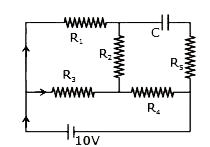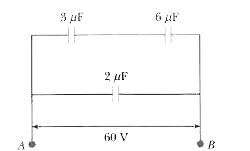In the circuit shown, the cell is ideal , with emf=15V. Ecah resistance is of 3Ω. the potential difference across the capacitor is
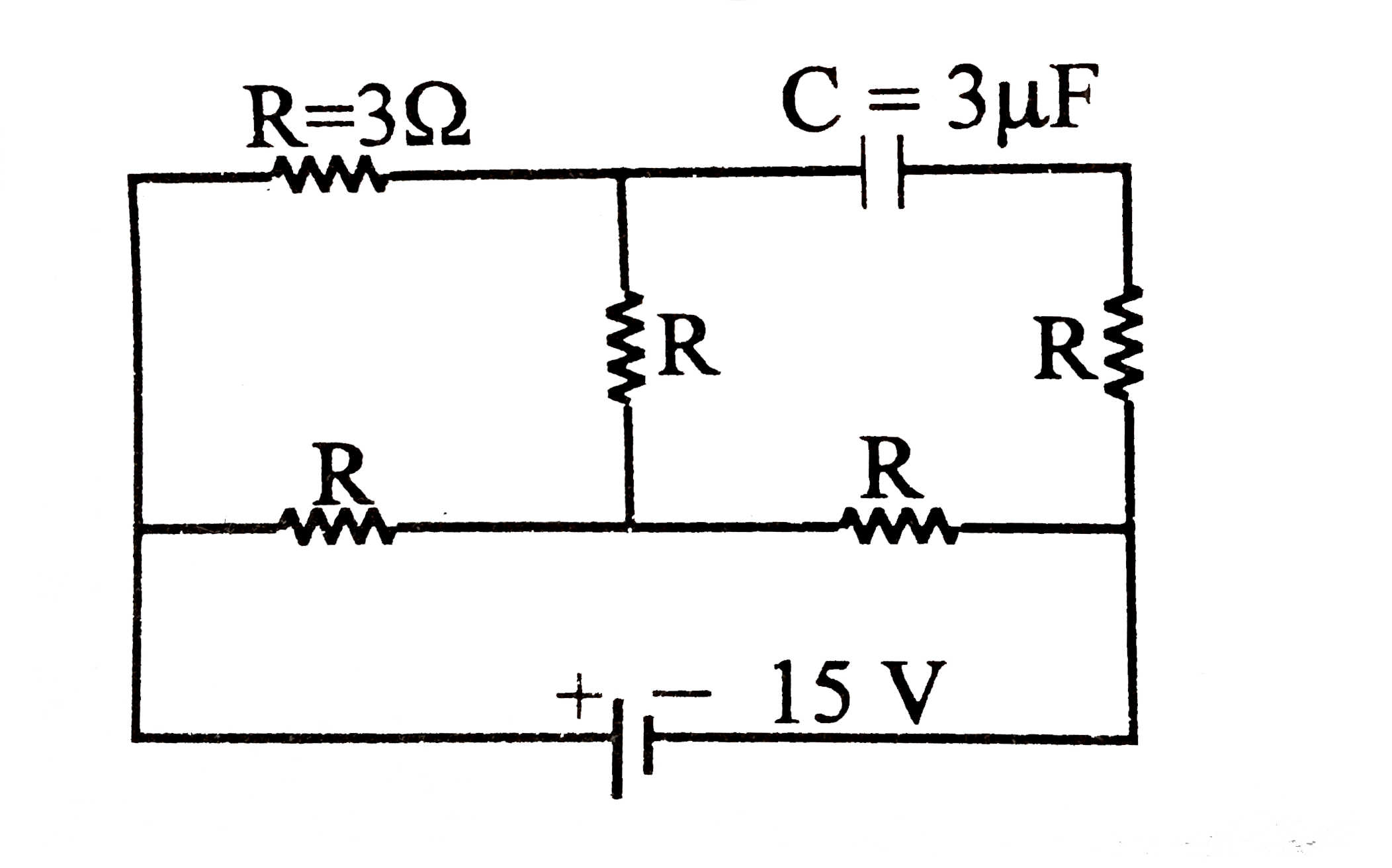
A
zero
B
9V
C
12V
D
15V
Video Solution
Text Solution
The correct Answer is:C
At steady state capacitor is open circuit
I=15(3+3)∣∣3+3)=3amp.
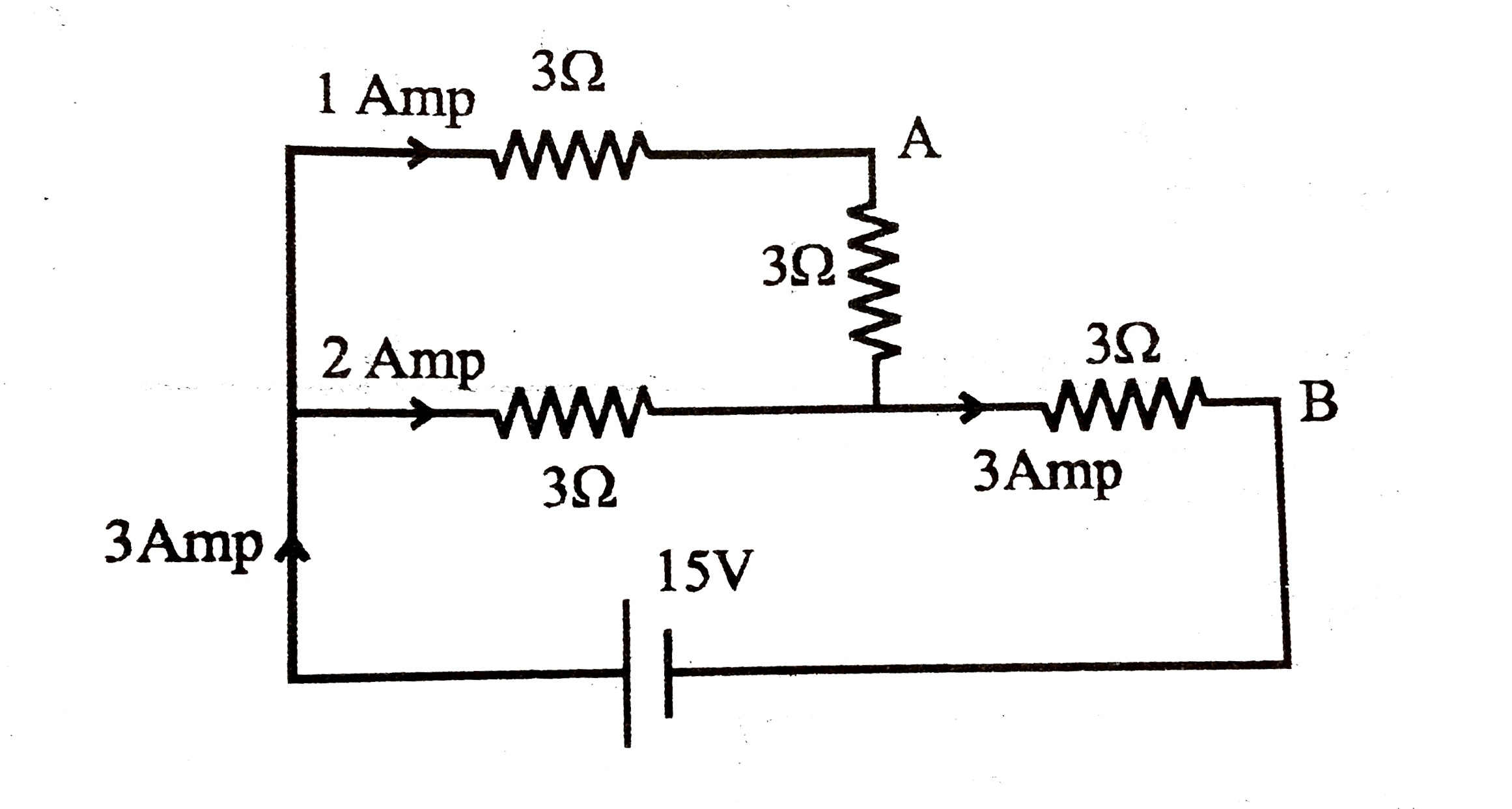
VB+3×3+3×1=VA
VA−VB=12volt
(2) Since plate 1 and 4 aer connected by a conducting wire so
V1=V4
So V2−E2d=V2−E1×2d−E1d
E2=3E1
Q2∈0A=3Q1∈0A⇒Q2=3Q1...(1)
Since net charge on 2 is Q
Q1+Q2=Q...(2)
From (1) and (2)
Q1=Q4,Q2=3Q4
|
Similar Questions
Knowledge Check
In the circuit shown in fig. the cell is ideal with emf 15V. Each resistance is of 3Ω. The potential difference across the capacitoro in steady state is
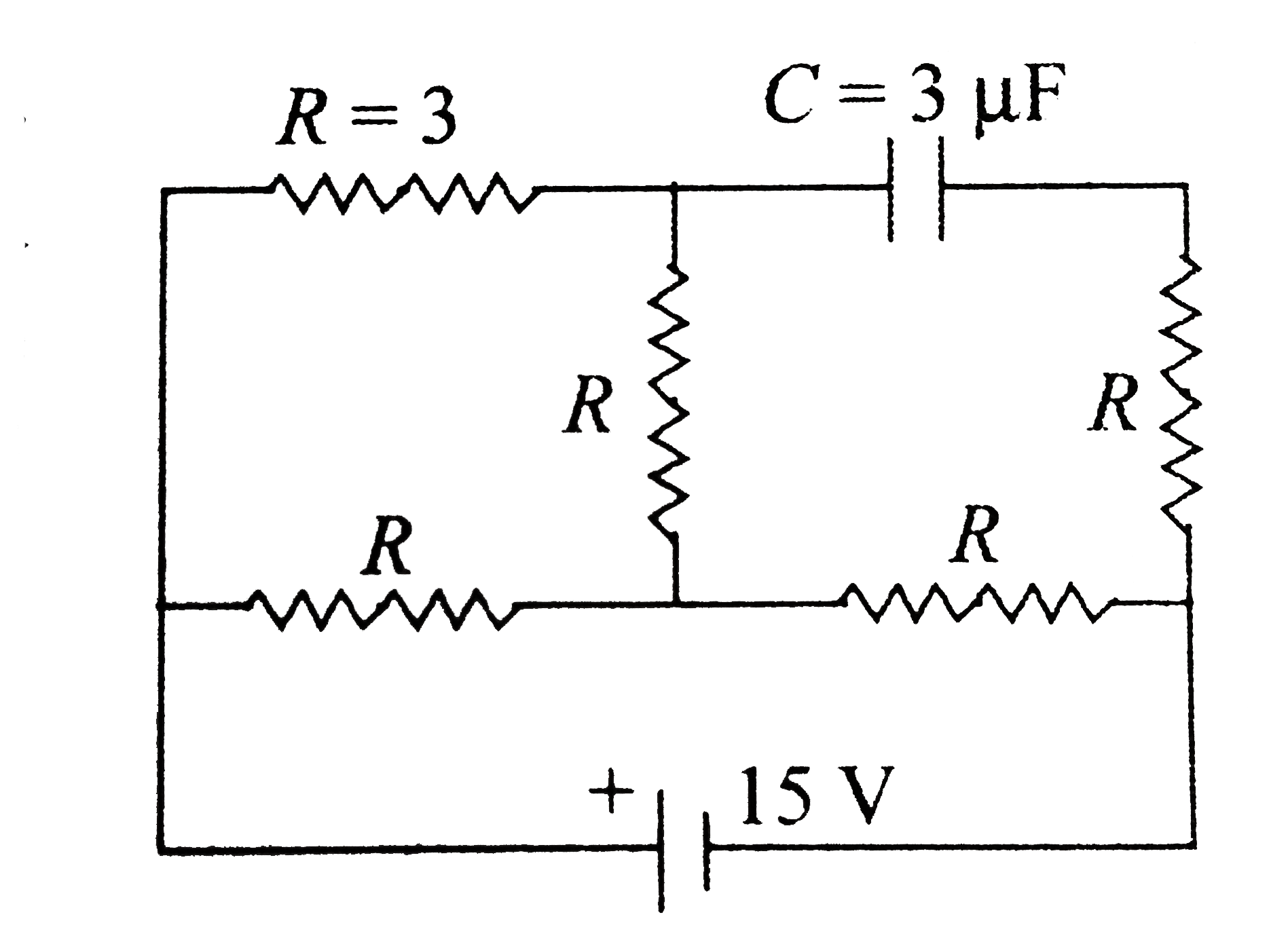 A0B9 VC12 VD15 V
A0B9 VC12 VD15 VIn the circuit shown the cell is idea with end =15V each resistance is of 3Ω The potential difference the capacitor is
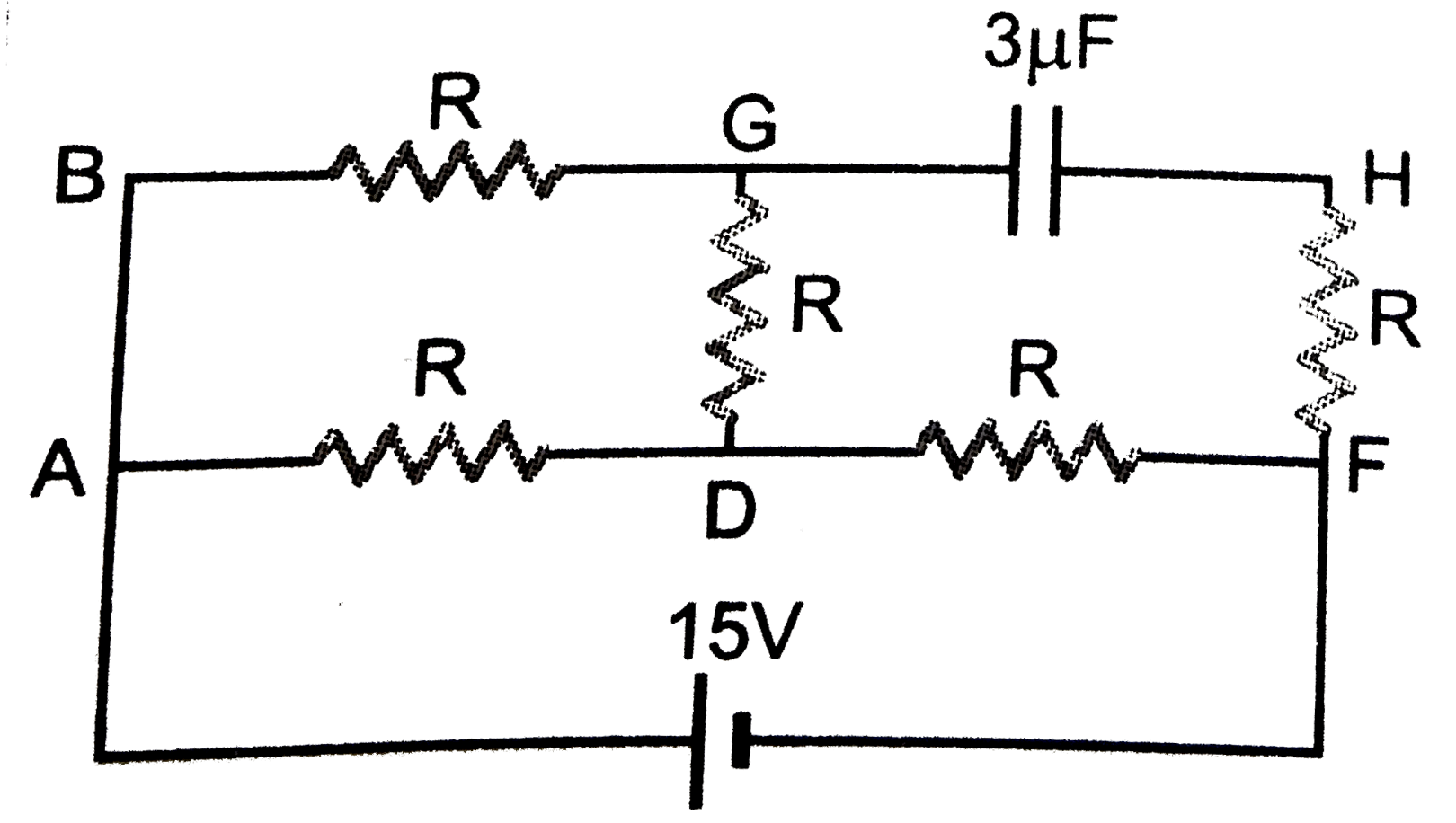 AzeroB9VC12VD15V
AzeroB9VC12VD15VIn the circuit shown in the figure, the potential difference across the 4.5μF capacitor is
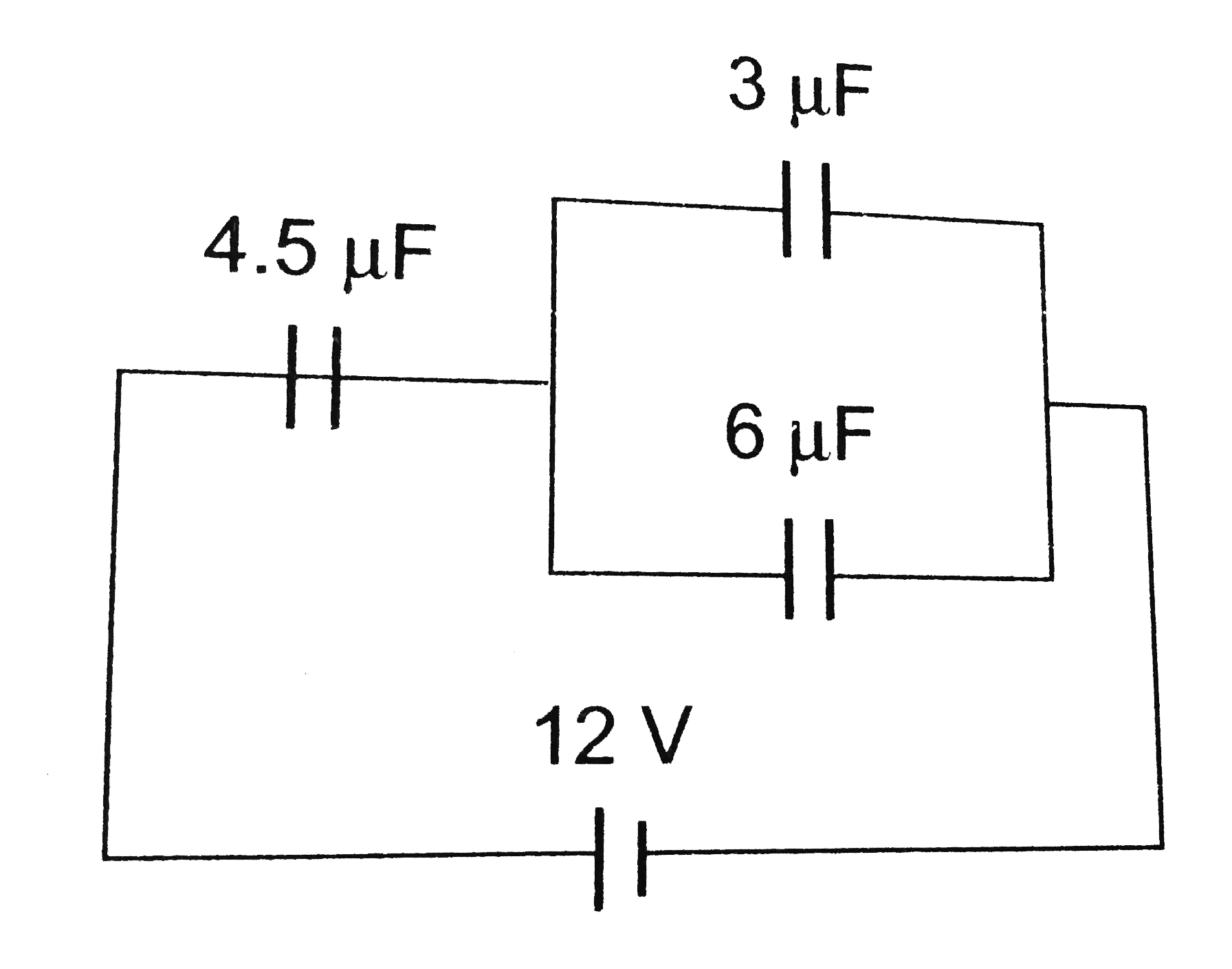 A83voltsB4 voltsC6 voltsD8 volts
A83voltsB4 voltsC6 voltsD8 volts
What is the potential difference across 2μF capacitor in the circuit shown?
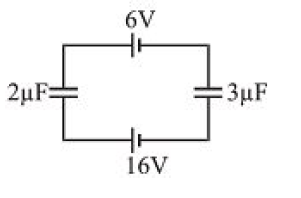
View SolutionWhat is the potential difference across 2μF capacitor in the circuit shown?
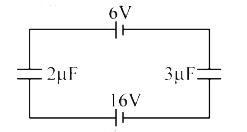
View SolutionIn the circuit shows in Fig. 6.63, the cell is ideal with emf 9V. If the resistance of the coil of galvanometer is 1Ω, then
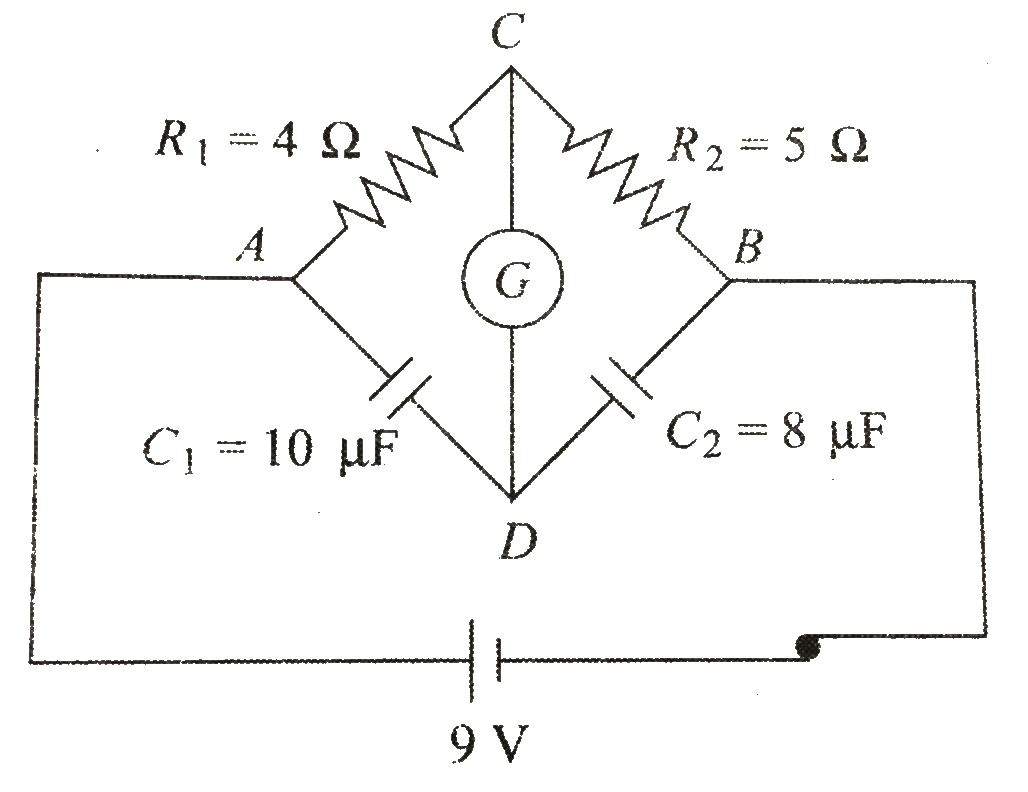
View SolutionIn the circuit shown, the cell is ideal with emf = 2V . The resistance of the coil of the galvanometer G is 1Ω.

(i) No current flows in G
(ii) 0.2A current flows in G
(iii) potential difference across C1is1V
(iv) Potential difference across C2 is 1.2V
View SolutionIn the circuit shown below:

The potential difference across the 3Ω resistor is:
View Solution

